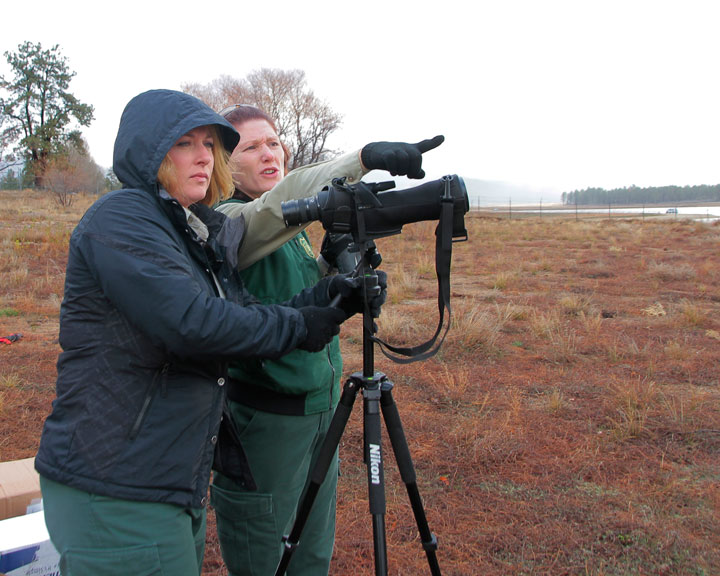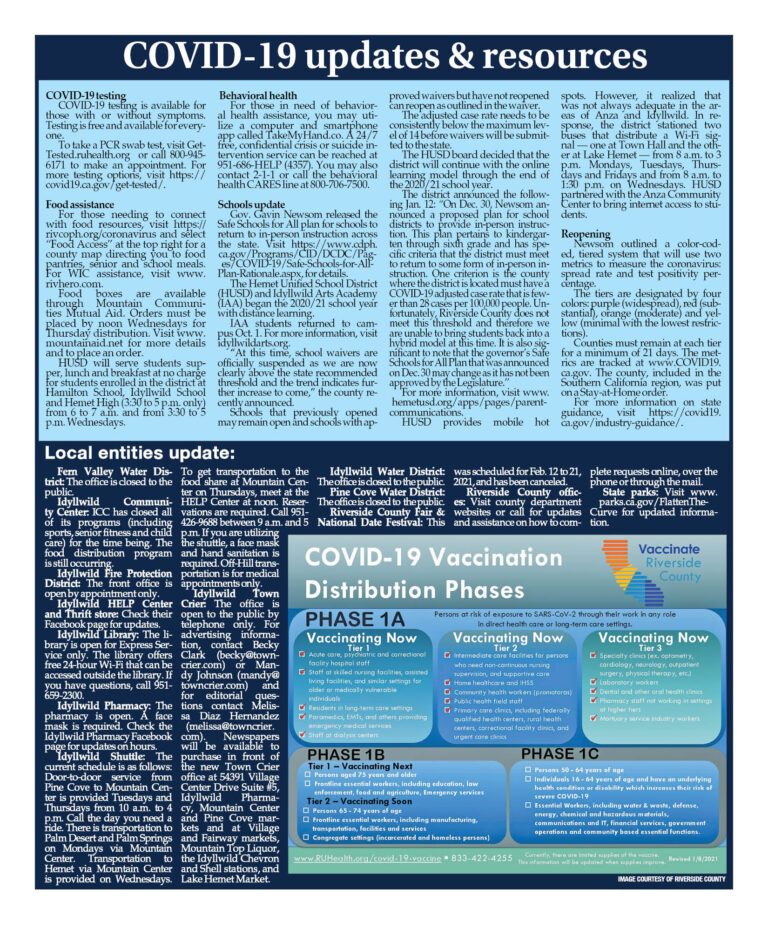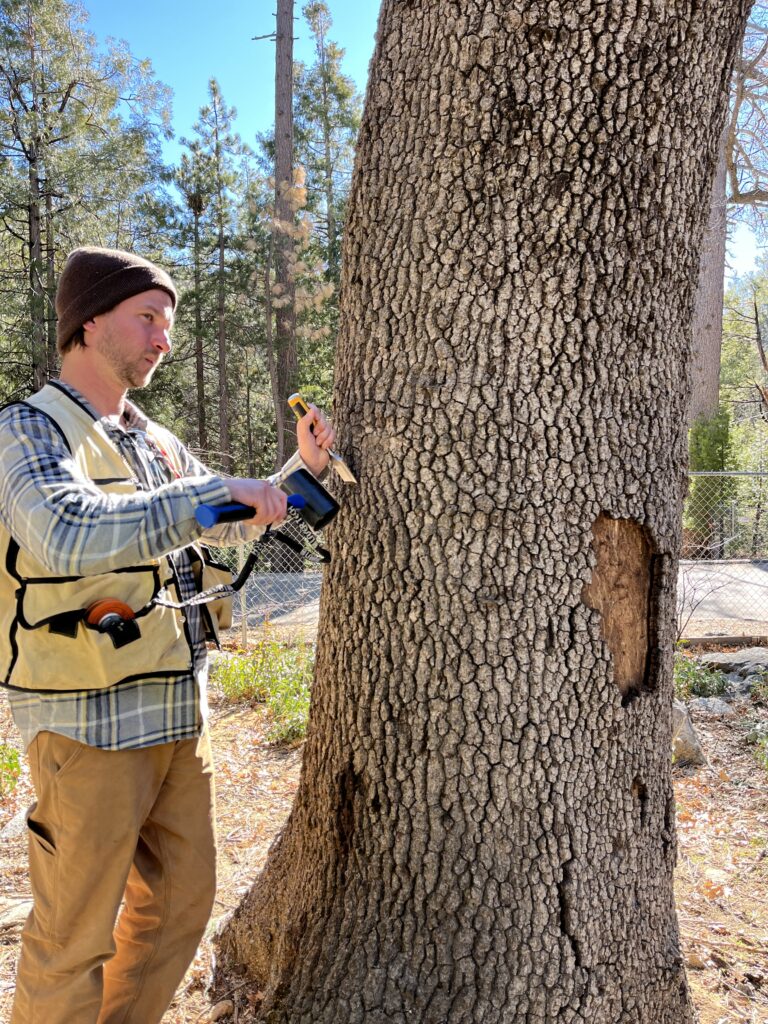Two adult bald eagles spotted at Lake Hemet

During the first of four Saturday public bald eagle counts last weekend, two adults were seen at Lake Hemet. Despite the inclement weather, which caused the cancellation of one area count, nine bald eagles were seen in the San Bernardino National Forest on Sunday during the count period. This number may underrepresent the actual number of eagles on the forest because the count at Big Bear Lake, usually surveyed during the census, was canceled, according to U.S. Forest Service Public Information Officer John Miller.
Even though the Big Bear public count was canceled, Forest Service biologists saw three eagles (two adults and one juvenile) there during the census period. One adult eagle was observed by the 13 volunteers at Lake Perris. Nine observers counted three eagles (two adults and one juvenile) at Lake Silverwood. Three observers at Lake Arrowhead saw no eagles.
With more winter storms in the forecast, the Forest Service expects more migrant bald eagles to visit the area over the next few weeks. Typically, the highest eagle counts are usually in January and February.
The remaining bald eagle counts for this winter are scheduled for the Saturday mornings of Jan. 10, Feb. 14 and March 14. No experience is needed.
Bald eagles are usually found close to water, such as Lake Hemet, because their diet is primarily made up of fish and ducks. As winter approaches in northern regions, lakes freeze over and waterfowl fly south. For bald eagles, that means food has become scarce so they head south looking for areas with abundant food supplies and end up wintering in Southern California, according to the Forest Service.
Breeding populations of bald eagles in Southern California were extinct by the late 1950s. Since 2003, several pairs of bald eagles have decided that our Southern California neighborhoods were too nice to leave — they built nests and have successfully raised families. Nesting bald eagles can now be found at Lake Hemet, Lake Skinner, Lake Matthews and Big Bear Lake.
As the local populations continue to grow in North America, year-round residency and nesting is becoming more common.
A female eagle hatched at San Francisco Zoo in 2000 was released as a chick on Catalina Island as part of the reintroduction efforts. In 2004, she arrived at Lake Hemet and decided to take up year-round residence with the male bald eagle already there. This pair has nested every year since then and fledged several eaglets over the past 10 years.
Future volunteers for the local count at Lake Hemet should plan to meet at the Lake Hemet Market at 8:30 a.m. for orientation. Contact Heidi Hoggan (hhoggan@fs.fed.us or 909-382-2945) for more information.






